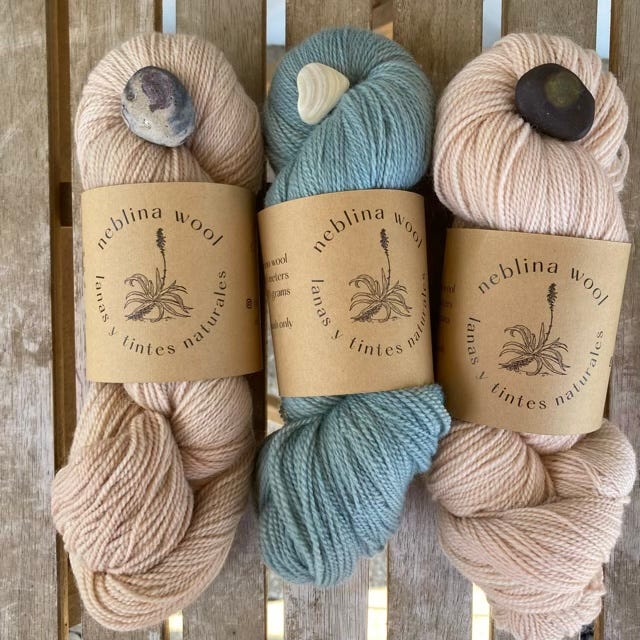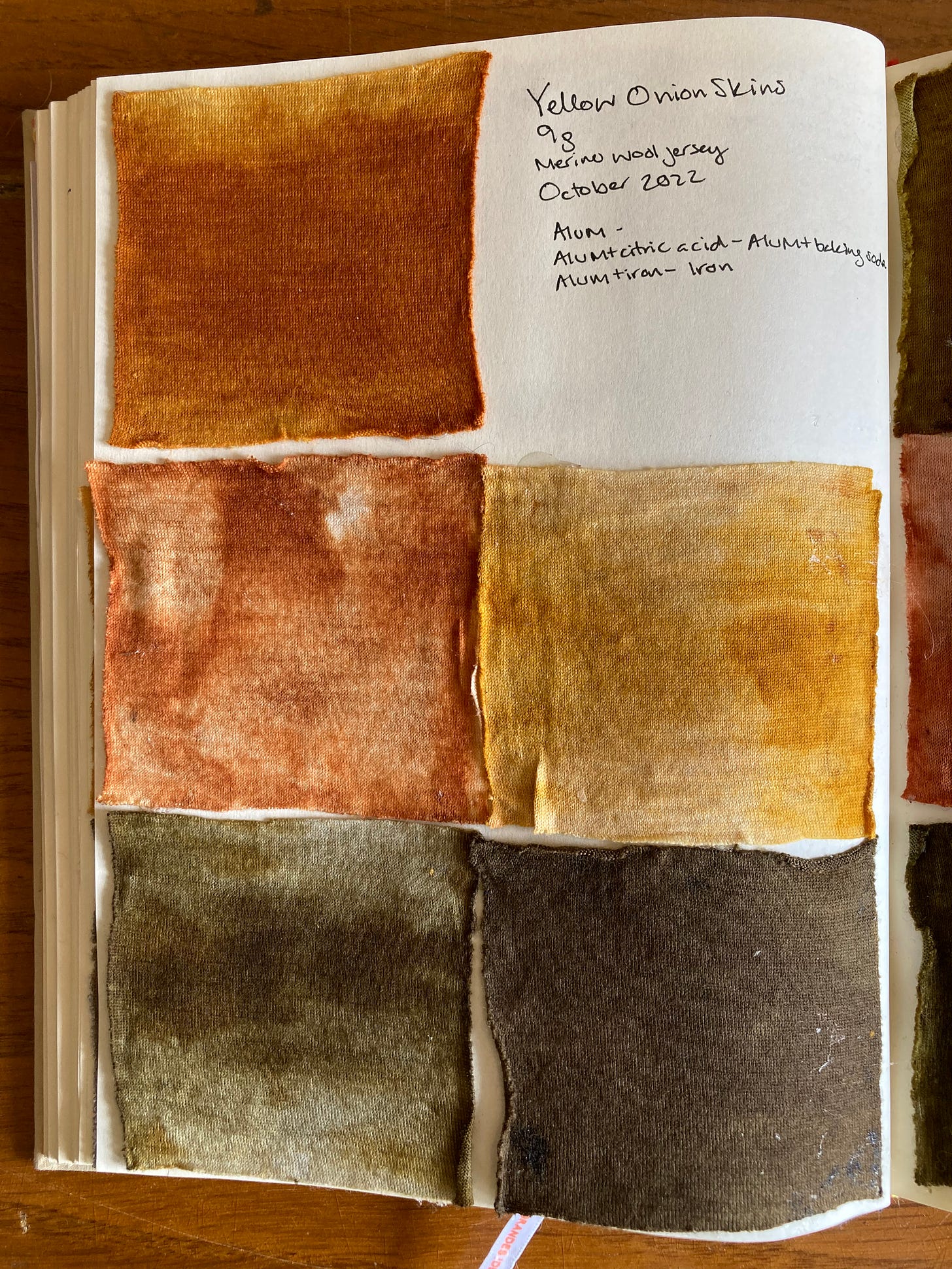One of the easiest ways to experiment with natural dyes is to use fruit and vegetable scraps leftover from cooking. Avocados and onions are foods that I almost always have in my kitchen, and they both allow me to both eat the food and get dye material as a byproduct. This is a cheap and accessible way to get into natural dyeing, since it reuses material that otherwise would have gone straight to the compost. So it’s also a great way to practice sustainability.
(Another great dye material in this category is pomegranate rinds, which I wrote about in May.)
First I want to talk about avocados in Chile. Avocados are grown here, and many people eat them every day. When I moved here I was thrilled to have relatively cheap, always fresh avocados available all the time. But just having avocados locally available to me doesn’t necessarily make them sustainable. The demand for avocados and the expansion of avocado plantations in Chile is a big contributor to the water crisis here- this documentary is a good way to learn more. I believe it’s important to be aware of the impacts of the food we eat beyond the health benefits to us, and even though it might be impossible to make perfect choices I try to keep learning and do the best I can. When I do buy avocados, I use them for both food and dye and then compost after dyeing, extending their life as much as possible and reducing waste.
The pits and the skins of avocados can be used for dye. After eating the fruit, I wash and dry them, and then store them in the freezer until I’m ready to use them. The freezer helps keep them fresh, but if I don’t have room I dry them out in a single layer and then store them in a paper bag. As a general rule, when collecting fresh dye materials you should use at least 100% wof* of dye fresh material. 15-20 avocados is probably enough for a dye project.
*wof= weight of fiber; that is, if you have 100 grams of textiles, you should use 100 grams of fresh dye material

When I first started experimenting with natural dyes back in 2016, I got lucky on my first try and was delighted to discover that avocado pits give the perfect Millennial Pink. (So trendy at the time! Now I think that, like all natural colors, it’s a classic.) In subsequent dye experiments I learned that it’s not always that easy to get pink, especially when using alum as a mordant, especially on wool. This is because the color comes from tannins, which create peach, pink or brown tones and tend to give pink in a neutral or slightly alkaline environment, and peach or even pale yellow in an acidic environment. An avocado dye bath will get pinker when it’s more alkaline, but mordanting with alum (a good idea if you want the color to last longer) will make the dye bath slightly acidic. Wool also likes a slightly acidic environment. Still, I have had luck using alum-mordanted wool and then shifting the pH.
Rebecca Desnos and Kaliko share tips for getting pink that have been helpful to me. But the peachy and brownish tones that come from avocados are nice too. Using an iron modifier after dyeing changes the color to a purpley gray. I enjoy the element of surprise with natural dyeing and try to appreciate whatever color I get.

I love to use avocado dye on my naturally dyed clothing. I have a few cotton and linen t-shirts that I’ve kept in my wardrobe for years, and whenever their color fades or I feel like a change I overdye them, usually with kitchen scraps or to exhaust a dye bath after dyeing yarn. Using dye materials that are already on my grocery list anyway is an easy way to keep living color in my wardrobe.
Onion skins are another spectacular kitchen waste dye that can give bright, intense colors with even a small amount of material. Whenever I chop up an onion, I take the papery outer layers and save them in a paper bag. Onion skins are very lightweight, so using about 30% wof will give a saturated color. This still might take awhile with just one household’s onion usage so if you want to collect them faster you can ask at the grocery store or farmer’s market. Both red and yellow onion skins can be used for dyeing. I recommend keeping them separate because they will give different colors.
Both yellow and red onion skins will change color with pH modifiers. The red in particular will change dramatically due to its anthocyanin dye compounds.
Like with avocados, I often use onion skins to refresh my wardrobe. I also get good results on my yarn. Onion skins release their color quickly and can give a lot of different colors so they are especially great in bundle dyeing. They’re as much a staple in my dye practice as they are in cooking.










